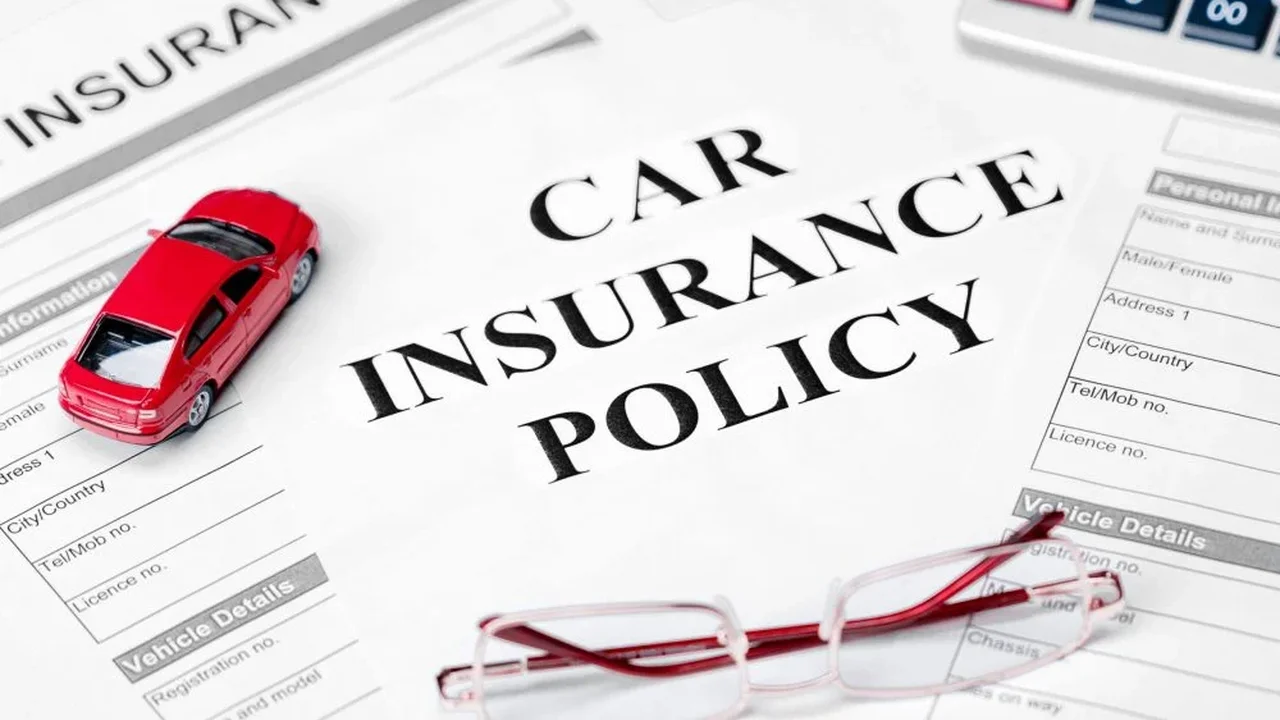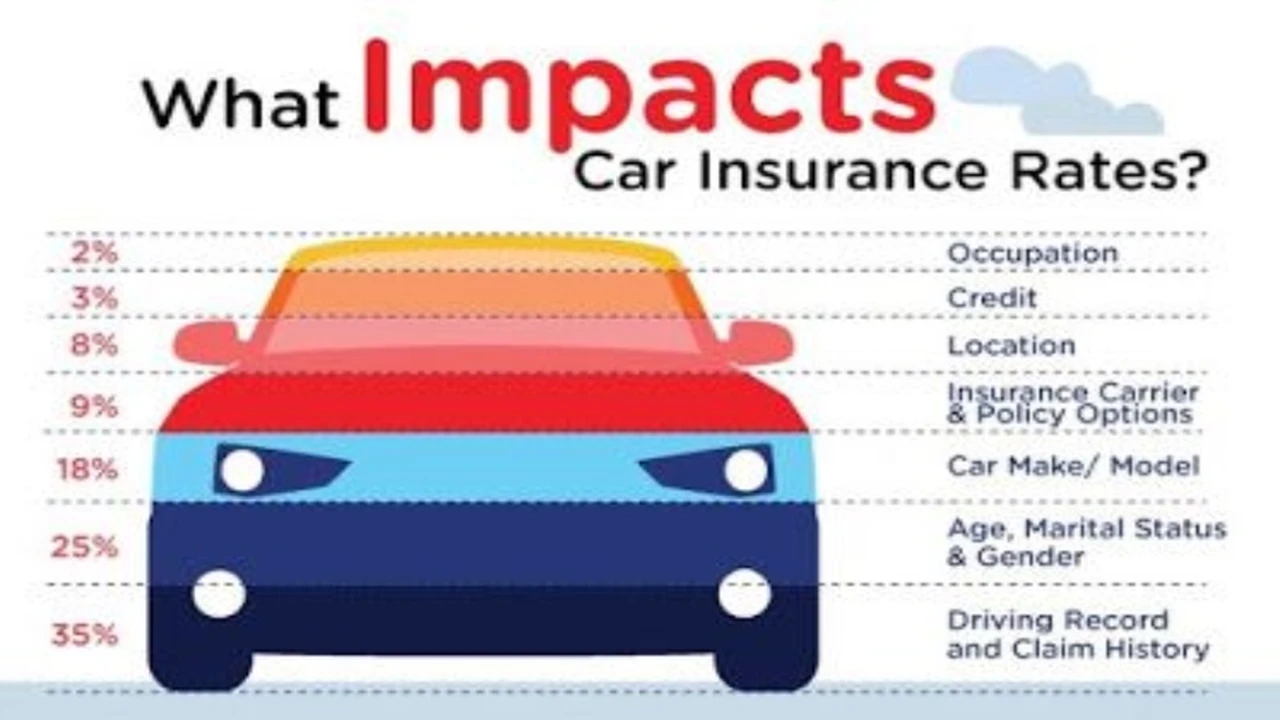Collision vs. Comprehensive Coverage: What's the Difference?

Understanding Car Insurance Basics Collision Coverage Explained
Okay, so you're diving into the world of car insurance, and you're immediately hit with terms like "collision coverage." What exactly *is* that? Simply put, collision coverage helps pay for damage to your car if you hit another vehicle or object (like a fence or a tree), or if your car rolls over. It doesn't matter *who* is at fault. Even if you're the one who caused the accident, your collision coverage kicks in. Think of it as protection for your car in the event of, well, a collision.
Let's say you're driving down the street and accidentally rear-end the car in front of you. Ouch! Your collision coverage would help pay for the repairs to your car, minus your deductible, of course. Or maybe you're backing out of your driveway and accidentally hit your mailbox (we've all been there!). Collision coverage can help with that too.
It's important to note that collision coverage *doesn't* cover everything. It doesn't cover damage from things like hail, vandalism, or theft. Those are covered by comprehensive coverage, which we'll get to in a bit. And it definitely doesn't cover injuries to yourself or others; that's where liability and medical payments coverage come in.
Delving Deeper Into Comprehensive Car Insurance Coverage
Alright, now let's talk about comprehensive coverage. This is where things get a little broader. Comprehensive coverage helps pay for damage to your car that's *not* caused by a collision. Think of it as protection against pretty much everything else that could happen to your car besides a crash. This includes things like:
- Theft: If your car is stolen, comprehensive coverage can help pay for its replacement (minus your deductible, of course).
- Vandalism: Someone keyed your car? Comprehensive coverage can help cover the cost of repairs.
- Hail, Wind, and Other Weather: A hailstorm left your car looking like it was attacked by golf balls? Comprehensive coverage is your friend. Same goes for damage from wind, floods, or other natural disasters.
- Fire: If your car catches fire (hopefully not!), comprehensive coverage can help.
- Falling Objects: A tree branch falls on your car? Comprehensive coverage.
- Animal Damage: Hit a deer? Comprehensive coverage. (This is a big one in some areas!)
- Glass Breakage: Cracked windshield? Comprehensive coverage can cover the repair or replacement.
Basically, comprehensive coverage protects you from things you can't control. It's the "act of God" (and bad luck) insurance. It's often required if you're leasing or financing your car, as the lender wants to make sure their investment is protected.
Key Differences Between Collision and Comprehensive Insurance Coverage
So, what's the *real* difference? Here's the breakdown:
- Collision: Covers damage to your car from collisions, regardless of fault. Think hitting another car or object.
- Comprehensive: Covers damage to your car from everything else, like theft, vandalism, weather, and animal damage.
A good way to remember it is: Collision is about *crashing*, and comprehensive is about *everything else*.
Choosing the Right Car Insurance Coverage Options For You
Now, the big question: Should you get both collision and comprehensive coverage? The answer depends on a few factors:
- The Age and Value of Your Car: If you have an older car that's not worth much, it might not make sense to pay for collision and comprehensive coverage. The premiums might be more than the car is actually worth. In that case, you might be better off just having liability coverage.
- Your Risk Tolerance: How comfortable are you with the idea of paying out of pocket for repairs if something happens to your car? If you're risk-averse, you might want to get both collision and comprehensive coverage, even if your car isn't brand new.
- Your Budget: Collision and comprehensive coverage add to your insurance premium. If you're on a tight budget, you might have to choose between them, or opt for higher deductibles to lower your premiums.
- If You Have a Loan or Lease: As mentioned before, lenders usually require you to have both collision and comprehensive coverage.
Think about your individual circumstances and weigh the pros and cons before making a decision.
Understanding Car Insurance Deductibles and Premiums
Okay, let's talk about deductibles and premiums. These are two key concepts you need to understand when choosing your car insurance coverage.
Deductible: This is the amount of money you pay out of pocket before your insurance coverage kicks in. For example, if you have a $500 deductible for collision coverage and you get into an accident that causes $2,000 worth of damage to your car, you'll pay the first $500, and your insurance company will pay the remaining $1,500.
Premium: This is the amount of money you pay to your insurance company on a regular basis (usually monthly or annually) to keep your insurance coverage active.
Generally, the higher your deductible, the lower your premium will be, and vice versa. This is because you're taking on more of the risk yourself when you have a higher deductible. So, if you're willing to pay more out of pocket in the event of an accident, you can save money on your monthly premiums. However, you need to make sure you can actually afford to pay that deductible if something happens!
Real-World Car Insurance Claim Scenarios Collision vs Comprehensive
Let's walk through some real-world scenarios to illustrate how collision and comprehensive coverage work in practice.
Scenario 1: The Parking Lot Fender Bender (Collision)
You're backing out of a parking space at the grocery store and accidentally bump into the car next to you, causing damage to both vehicles. Since you were at fault for the accident, your collision coverage would help pay for the repairs to your car, minus your deductible. It would *not* cover the damage to the other car; that's where your liability coverage comes in.
Scenario 2: The Hailstorm (Comprehensive)
A sudden hailstorm rolls through your town, leaving dents all over your car. Since this damage was caused by a weather event, your comprehensive coverage would help pay for the repairs, minus your deductible. You would file a claim with your insurance company, provide photos of the damage, and they would send an adjuster to assess the damage and provide you with a repair estimate.
Scenario 3: The Stolen Car (Comprehensive)
You wake up one morning to find that your car is gone. It's been stolen! After reporting the theft to the police, you would file a claim with your insurance company. Comprehensive coverage would help pay for the replacement of your car, minus your deductible. The insurance company would likely require you to provide proof of ownership and any other relevant information.
Scenario 4: The Deer Strike (Comprehensive)
You're driving down a rural road at night when a deer jumps out in front of your car. You can't avoid it, and you hit the deer, causing significant damage to the front of your car. Since this damage was caused by an animal, your comprehensive coverage would help pay for the repairs, minus your deductible.
Recommended Car Insurance Products and Their Uses
Okay, let's talk about some specific car insurance products and how they might fit your needs. Keep in mind that prices and coverage options can vary widely depending on your location, driving record, and other factors, so it's always best to get quotes from multiple insurance companies.
1. State Farm: State Farm is a popular choice for many drivers due to its wide range of coverage options, competitive prices, and strong customer service reputation. They offer both collision and comprehensive coverage, as well as other types of coverage like liability, medical payments, and uninsured/underinsured motorist coverage.
* Use Case: State Farm is a good option for drivers who want a reliable and comprehensive insurance policy with good customer service. They're also a good choice for families, as they often offer discounts for insuring multiple vehicles and drivers on the same policy.
* Product Comparison: State Farm offers different levels of coverage and deductible options, allowing you to customize your policy to fit your specific needs and budget. They also offer a "Drive Safe & Save" program, which tracks your driving habits and rewards you with discounts for safe driving.
* Pricing: Pricing varies depending on your individual circumstances, but State Farm is generally considered to be competitively priced.
2. GEICO: GEICO is known for its aggressive advertising and low prices. They also offer both collision and comprehensive coverage, as well as other types of coverage. They're a good option for drivers who are looking for the cheapest possible insurance rates.
* Use Case: GEICO is a good option for drivers who are on a tight budget and are primarily concerned with finding the lowest possible insurance rates. They're also a good choice for drivers who are comfortable managing their insurance policy online, as GEICO has a strong online presence.
* Product Comparison: GEICO offers different levels of coverage and deductible options, similar to State Farm. They also offer discounts for things like being a student, being a member of the military, or having certain safety features in your car.
* Pricing: GEICO is generally considered to be one of the cheapest car insurance companies.
3. Progressive: Progressive is another popular car insurance company that offers a wide range of coverage options and competitive prices. They're known for their "Name Your Price" tool, which allows you to enter your budget and see what coverage options are available at that price point.
* Use Case: Progressive is a good option for drivers who want to compare different coverage options and prices easily. Their "Name Your Price" tool can be helpful for finding a policy that fits your budget.
* Product Comparison: Progressive offers different levels of coverage and deductible options, as well as add-ons like roadside assistance and rental car reimbursement. They also offer a "Snapshot" program, which tracks your driving habits and rewards you with discounts for safe driving.
* Pricing: Progressive is generally considered to be competitively priced.
4. Allstate: Allstate is a well-established insurance company that offers a wide range of coverage options and a strong customer service reputation. They're known for their "Good Hands" promise and their network of local agents.
* Use Case: Allstate is a good option for drivers who value personalized service and want to work with a local agent. They're also a good choice for homeowners, as they offer discounts for bundling your car and home insurance policies.
* Product Comparison: Allstate offers different levels of coverage and deductible options, as well as add-ons like roadside assistance and accident forgiveness. They also offer a "Drivewise" program, which tracks your driving habits and rewards you with discounts for safe driving.
* Pricing: Allstate is generally considered to be slightly more expensive than some of the other options on this list, but their strong customer service and local agent network may be worth the extra cost for some drivers.
Car Insurance Product Comparison Detailed Breakdown
To give you a clearer picture, here's a table comparing these four insurance companies:
| Company | Collision Coverage | Comprehensive Coverage | Price | Customer Service | Key Features |
|---|---|---|---|---|---|
| State Farm | Yes | Yes | Competitive | Excellent | "Drive Safe & Save" program, multiple policy discounts |
| GEICO | Yes | Yes | Lowest | Good | Strong online presence, discounts for students and military |
| Progressive | Yes | Yes | Competitive | Good | "Name Your Price" tool, "Snapshot" program |
| Allstate | Yes | Yes | Slightly Higher | Excellent | Local agents, "Good Hands" promise, "Drivewise" program |
Important Considerations:
- Deductibles: Remember that you can adjust your deductible to lower your premium. Consider what you can realistically afford to pay out of pocket.
- Discounts: Ask about available discounts. You might be eligible for discounts based on your age, driving record, vehicle safety features, or affiliation with certain organizations.
- Bundling: If you have other insurance needs (like homeowners or renters insurance), consider bundling your policies with the same company to save money.
- Coverage Limits: Make sure you have adequate coverage limits. Liability coverage is especially important, as it protects you if you're at fault in an accident and cause injuries or property damage to others.
Navigating Car Insurance Claims What To Do After an Accident
No one *wants* to be in an accident, but it's important to know what to do if it happens. Here's a quick guide:
- Ensure Safety: The most important thing is to make sure everyone involved is safe. Check for injuries and call 911 if necessary.
- Exchange Information: Exchange information with the other driver(s), including names, addresses, phone numbers, insurance information, and driver's license numbers.
- Document the Scene: Take photos of the damage to all vehicles involved, as well as the accident scene. Note the date, time, and location of the accident.
- Contact the Police: If there are injuries or significant property damage, contact the police and file a police report.
- Notify Your Insurance Company: Contact your insurance company as soon as possible to report the accident and file a claim. Provide them with all the information you have gathered, including the police report number (if applicable).
- Cooperate with the Insurance Company: Cooperate with your insurance company's investigation of the accident. They may need to speak with you, the other driver(s), and witnesses.
- Keep Records: Keep records of all communication with your insurance company, as well as any expenses you incur as a result of the accident.
Remember that you have a responsibility to be honest and accurate when reporting an accident to your insurance company. Providing false or misleading information could result in your claim being denied or your policy being canceled.
Future of Car Insurance Autonomous Vehicles and Coverage Implications
The future of car insurance is likely to be significantly impacted by the rise of autonomous vehicles. As cars become more and more self-driving, the risk of accidents caused by human error is expected to decrease. This could lead to lower insurance rates for drivers who use autonomous vehicles.
However, there are also new challenges and questions that arise with autonomous vehicles. For example, who is liable in the event of an accident involving a self-driving car? Is it the car manufacturer, the software developer, or the owner of the vehicle?
Insurance companies are already starting to grapple with these questions and develop new types of coverage to address the unique risks associated with autonomous vehicles. It's likely that we'll see more and more specialized insurance products emerge as autonomous technology continues to evolve.
Another trend that's likely to impact the future of car insurance is the increasing use of telematics. Telematics devices track driving behavior, such as speed, acceleration, and braking, and provide feedback to drivers on how to improve their driving habits. Insurance companies are starting to offer discounts to drivers who use telematics devices and demonstrate safe driving habits.
Overall, the future of car insurance is likely to be more personalized and data-driven. Insurance companies will have more information about individual drivers and their driving habits, allowing them to offer more tailored coverage options and prices.
:max_bytes(150000):strip_icc()/277019-baked-pork-chops-with-cream-of-mushroom-soup-DDMFS-beauty-4x3-BG-7505-5762b731cf30447d9cbbbbbf387beafa.jpg)






